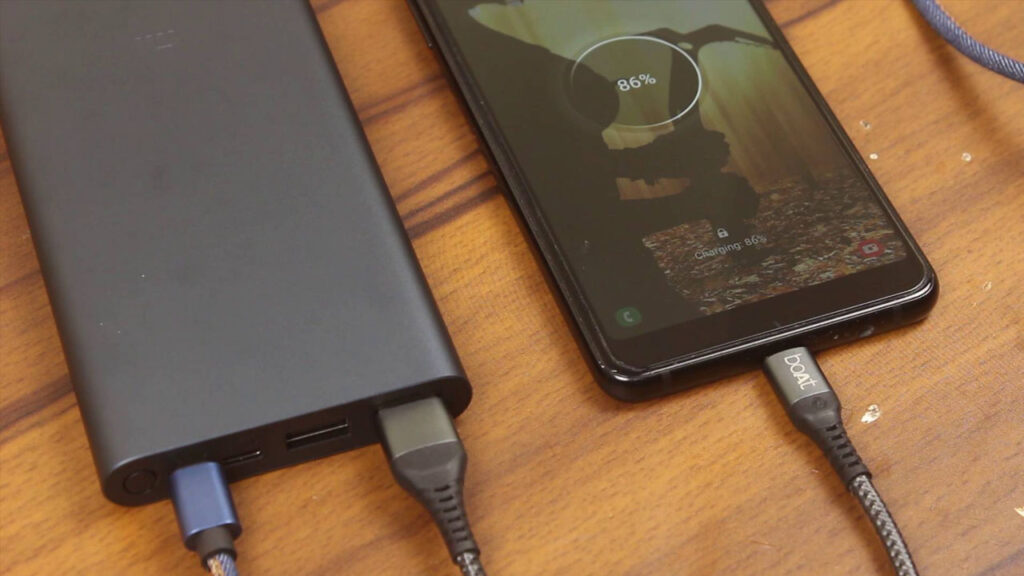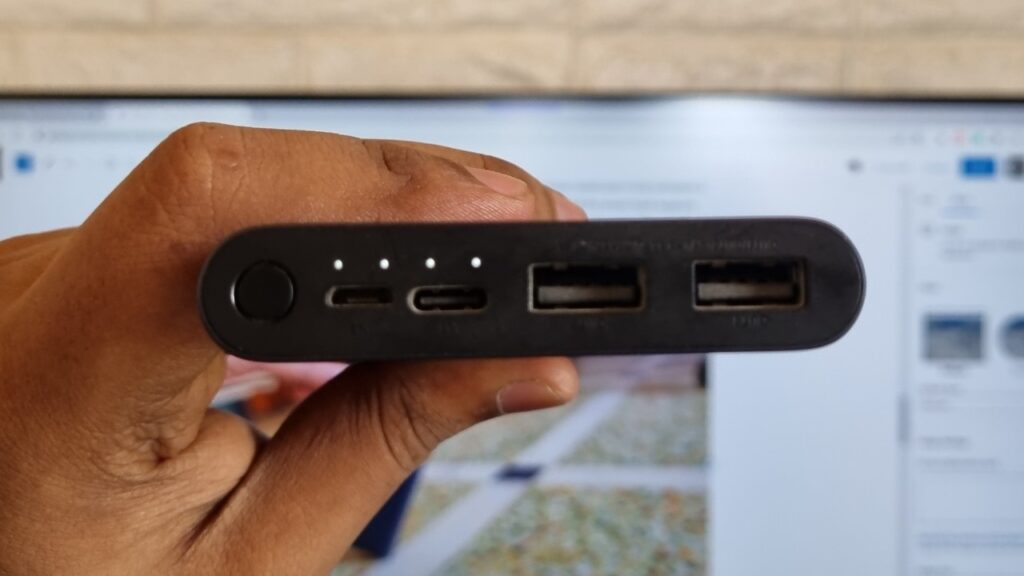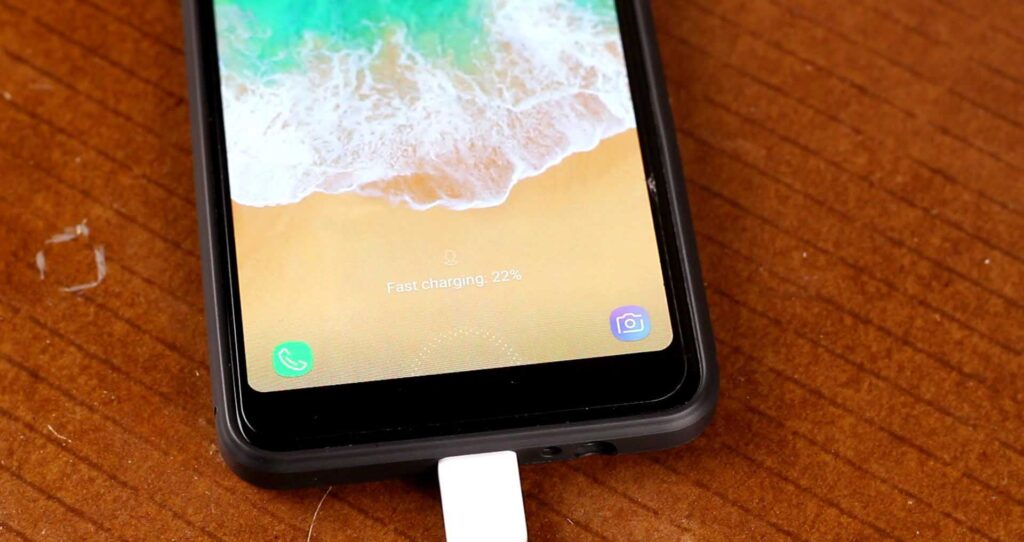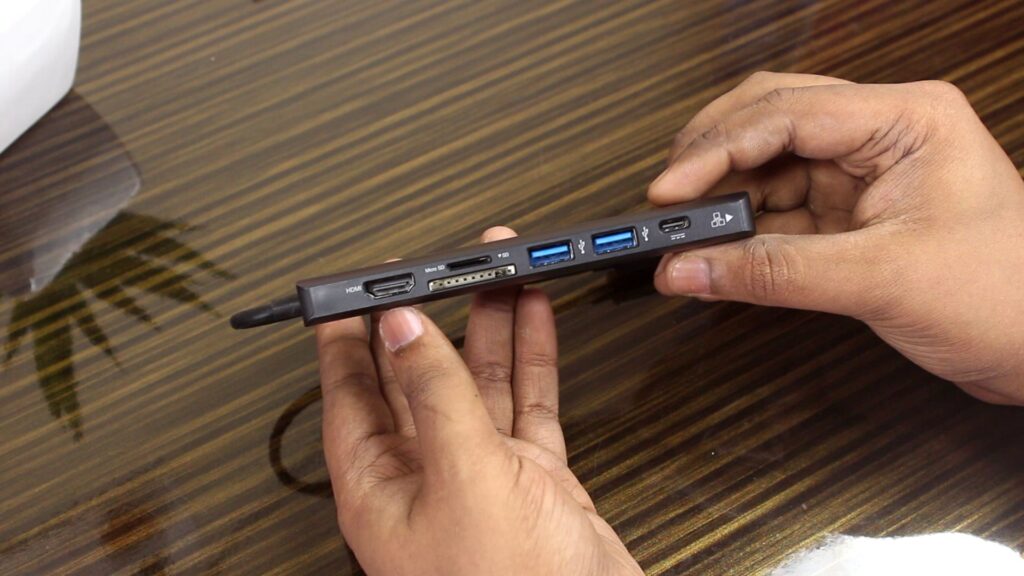Pass Through Charging – heard about it? Well maybe not. Nowadays, this technology is commonly found in power banks, battery packs, hubs, and docking stations. It’s also very convenient when it comes to charging multiple devices simultaneously. So, without further ado, let’s understand how does pass through charging work, what are its advantages and what consequences may you face if you use this technology recklessly?

What is Pass Through Charging?
Ok, let me give you a simple example. You have connected a power bank with a power adapter and your phone with the power bank. If the power bank has the Pass Through Charging enabled then the power bank and your phone, both charge simultaneously.

Basically, Pass through charging allows a device to not only charge itself but also distribute power to all the connected devices. You may have seen laptop docking stations that have a lot of IO ports to extend the connection flexibility of a laptop. Some docks offer a dedicated USB-C Power Delivery (PD) port where you can connect your laptop’s charger. Now that charger will power the laptop as well as all the connected devices with the dock.
How Does Pass Through Charging work?
It sounds simple but the actual process is way complicated because here, safety is very important especially when it comes to power banks. Pass-through charging technology relies on a series of power regulating circuits. Their main job is to maintain and prioritize the current flow to the different connected devices.
If the Pass Through Charging technology is in the power bank then maintaining the current flow to the battery becomes much more crucial. The circuit sometimes flows all the current to the connected device with the power bank let’s say your smartphone. Now your phone will charge at full speed. Maybe a bit later, current and overall power will be reduced and the phone’s charging process will slow down. This time, the power will be used to charge the battery of the power bank. Now the power bank and your phone simultaneously charge.
Is there any Practical Use of Pass-through Charging Technology?
For the power banks, this technology is dangerous but its usage in docks and USB Hubs is praiseworthy. If you think about it carefully, Pass Through Charging isn’t totally pointless for the power banks. For instance, you want to charge your phone and the power bank simultaneously but you don’t have two power adapters. This time, with the help of this tech instead of prioritizing a device, you could charge them both.

Another advantage is the power outage. Just think of it, you need to move to somewhere after an hour. You set off your phone on charge and get busy with something. After a few minutes, suddenly a power outage occurs. If you directly set the phone on the charge with the outlet, obviously charging will stop. But if you have connected the power bank in between the phone and the charger the power bank will charge your smartphone. In simple words, the power bank here is working like a UPS (Uninterruptable Power Supply). Also, the power bank protects your phone if any kind of power surge would come from the charger.
Problems with Pass-through Charging
This technology is not perfect, especially for the power banks. You may have seen while charging, every power banks heat up. Also when you drain power from it, it also gets quite warm. This is happening due to power conversion in the circuit of the power banks and the main culprit is inefficiency. Doesn’t matter which power bank you’re using, how much you have paid for that. With the current technology, there is no way to power conversion without any losses. Maybe depending upon the circuit, the exact percentage of energy losses could be different.
Now think of it, if you’ve done charging and discharging simultaneously with Pass Through Charging technology then both the heat adds up. You might already know that when electronic components heat up, they become inefficient and because of this inefficiency, those components generate more heat.

This heat will not only shorten the lifespan of the li-ion battery inside the power bank but also a constant risk of explosion. That’s why manufacturers don’t like this technology. It’s pretty dangerous. Also implementing such a technology requires quite a lot of protection features which ultimately adds up some cost.
As I have mentioned earlier, this technology is quite inefficient. If your device is directly connected with the adapter, that will be much more efficient.

Lastly, the most annoying problem is, your phone will not achieve the maximum charging speed all the time. It is completely upon the device which distributes the power to the different devices. In this case – the power bank. Also, the maximum power the phone can get is also limited by the power bank. If your phone can charge at 25W, the charger you have used can deliver that power but your power bank cannot provide more than 18W on its output. Now your phone will never get 25W. The maximum power is limited.
Which Devices have Pass Through Charging?
Pass-Through Charging is also known as bypass charging. In recent years, because of safety concerns and designing difficulties, not all the power bank manufacturers deliver it with their products. If they do then while both the devices are charging simultaneously (I mean the power bank is connected with the power adapter and the phone with the power bank) then the power bank limits the output power in between 5W to 10W and starts slow charging for the connected phone.

But, if we consider other than the battery packs aka power banks then this technology is extremely handy for USB hubs and docking stations. Generally, there is a dedicated USB-C Power Delivery (PD) port where you can connect your laptop’s charger. This way, especially those laptops which get charged with Type-C, get the advantage. For the charging, no USB-C port will occupy. One that will be used to connect multiple devices through the USB hub or docking station is also used for the charging.
Also Read: How to Set Up Dual Monitors In Windows 11! Easy Steps to Follow!
In the Concluding Lines…
So, yes bypass charging is an incredible technology. It is useful but not good enough for battery packs but with the improvement of the semiconductor industry and in battery technology, maybe pass-through charging will safely take a place inside the power banks. Until then just expect the best. So, hope you guys enjoyed this article and learned a thing or two if so then don’t forget to express your thoughts in the comment down below thanks for visiting.

